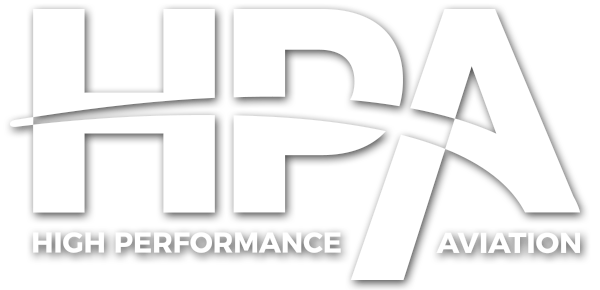High Performance Aviation
Initial Impressions on the Embraer Phenom 300
by Quinton Jordan 01/25/2022
After working on Phenom 300’s, 100’s and the ERJ135/145 aka Legacy 600 for several years as an aircraft mechanic, I was elated to be presented with an opportunity to embark on a trans-continental journey with a longtime family friend and retired American Airlines 777 captain Russ. A legend in the aviation community, he had spent the last 15 years or so flying and instructing in the 100/300 and ‘Praetor’ series aircraft. The trip was to originate out of Dallas TX, catch a flight to London England then get on another flight to Hamburg, Germany. From there, we would rent a car and drive roughly an hour and a half to Bremen, Germany. Once we arrived, we were to pick up the aircraft and fly it back to the US and deliver the jet to its new owner. The route back was dictated by weather and range limitations of the Phenom. Essentially, we would be taking the northern route to cross the Atlantic instead of flying directly across it.
We had planned to depart Bremen two days after arriving in the country. Mainly, this was to get acclimated to the time change, and quickly learned from Russ the secret to international flying and travel, is to be well-rested and well-fed. With that being said, we did just that, staying in a nice hotel and eating at some fantastic authentic German eateries (Expense accounts are great). The Phenom 300 we would be flying back was a German-registered aircraft and thus would need to be imported into the US which under normal circumstances would be difficult at best. Now, unless you have been living under a rock for the last two years then you would understand what an economic and social impact the dreaded ‘corona-virus’ or Covid-19 virus has had around the world. This made an already difficult task almost impossible. Working with one of the best pilots/managers in the business Russ was able to put out several fires whether they were related to paperwork discrepancies or dealing with a disheveled DAR ‘Designated Airworthiness Representative’. The facility we took delivery from was a fantastic and excellent example of teamwork in motion, friendly, professional, and willing to help when needed really helped to get the job done.
With the paperwork taken care of and the Jet checked out mechanically (standard in-depth post-maintenance pre-flight, updated databases, and charts) we were ready to depart eight days after arriving in Germany. The route home would consist of a leg from Bremen to Scotland as a technical stop then onto Reykjavík Iceland for another stop and overnight. The next day we planned on leaving direct to Goose Bay Canada however after reviewing the weather forecast and fuel burn associated with being RVSM negative (Reduced Vertical Separation Minimums (RVSM) this is an international program that reduces altitude separation from 2,000 feet to 1,000 feet between flight levels 290 and 410). It appeared as if we would need to make a stop in Greenland (Greenland is not very green), from Greenland we would then attempt an approach into Goose Bay which has historically bad weather in the dead of winter. Our next stop would be in Bangor Maine to clear US customs and complete import documents after that we would overnight in Maine then head out to our final destination of Indianapolis Indiana.
On the first day of the trip I was fairly anxious to get out of Germany, it’s an amazing country with more than enough activities, historical sites, castles, fast highways and restaurants to make an extended vacation there but, with deteriorating weather forecasted, holidays rapidly approaching and normal life happenings it was time to depart. After filing a flight plan to Scotland and starting the Pratt & Whitney PW305E’s it was time to taxi to our departure runway despite a slight language barrier we made our way to runway after holding short for several arriving Airbus’s we lined up and set the power on the ‘fadec’ controlled throttles to the T/O position.
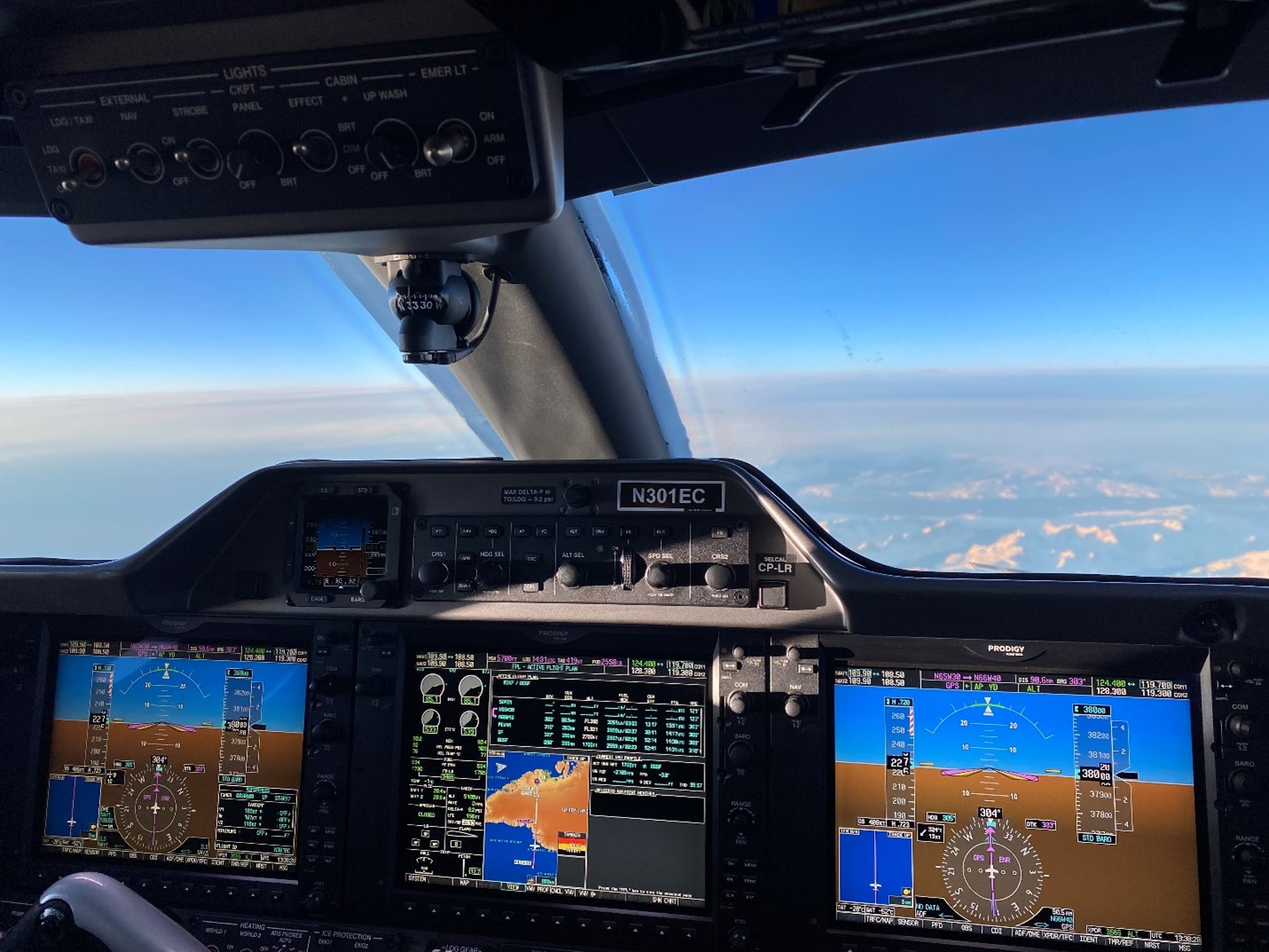
The 300 screamed to life, accelerating with enough force to throw any loose gear or equipment to the rear of the cabin. This included a checklist that I had failed to secure (which was important for normal operations). Fortunately, we had loaded the flight plan into the G1000 Avionics Suite so, navigation and where to go after take-off was not an issue. After the initial climb out, I secured the checklist and ran through the items. In cruse, the Embraer Jet managed to true out at about Mach .75, despite the nearly 100-knot headwind we were facing on our way to Scotland. The initial approach and landing in Scotland were uneventful and smooth, with a quick turn on the fuel and fresh coffee in the pot we were ready to depart for our last stop of the day Iceland.
The flight to Iceland was uneventful as well, with very good visibility similar speeds, and plenty of fuel in case anything went awry we were ready to land, get to the hotel and have a nice meal before an early morning departure. The hotel in Reykjavík had a fantastic breakfast spread which certainly helped calm the nerves thanks to confusion on covid testing and flight planning discrepancies from our handling company. We arrived at the airport early in the morning to an aircraft covered in snow and ice, so to make certain we departed on time we had the aircraft de-iced which involved spraying the whole airplane in the de-icing fluid. The captain was quite perturbed when the de-icing crew failed to clean the windshield and he had to exit the jet in the sub-zero temperatures and clean the windshield himself so we would have the visibility to taxi and take off.
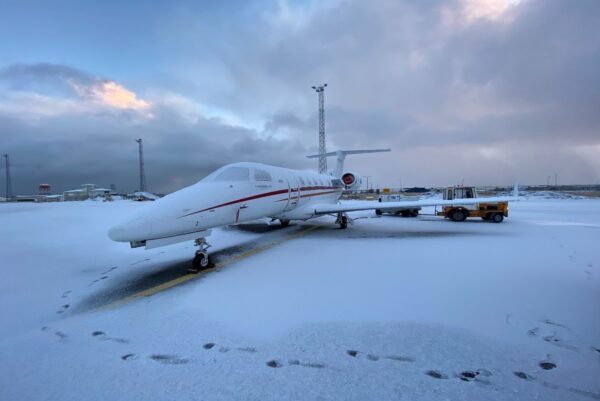
After take-off we were headed off to Greenland for a technical stop, what was not accounted for was the extreme cold soaking (-13 degrees Celsius) that occurred and caused a ‘cas’ message stating the cabin door was ajar. Several attempts to correct the issue via the AFM and checklist failed to fix the message so a joint decision was made to continue the flight. Headed across the northern Atlantic with our avionics saying that the main cabin door was not secure was unsettling however with all the physical latch indicators showing the door was closed along with the cabin differential pressure being well within the manufactures specification it was clear the issue was an indication error.
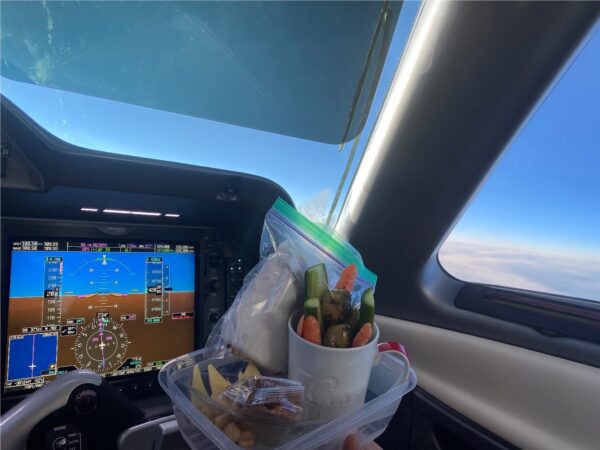
The approach into Goose Bay was the first time during the trip we were in actual IMC (instrument meteorological conditions) while slightly nerve-racking, I knew the instrumentation and the crew was up to the task of completing a safe approach into the airport. We ended up breaking out of the clouds and icing conditions at about 1200ft MSL (Mean Sea Level) with the runway in sight continuing to touch down where the braking condition was better than expected. Taxiing to park at the FBO snow, slush and ice covered the ramp as much as it seems like an inappropriate time to have ice cream that’s exactly what we did, and it was fantastic once the engines and heat were running.
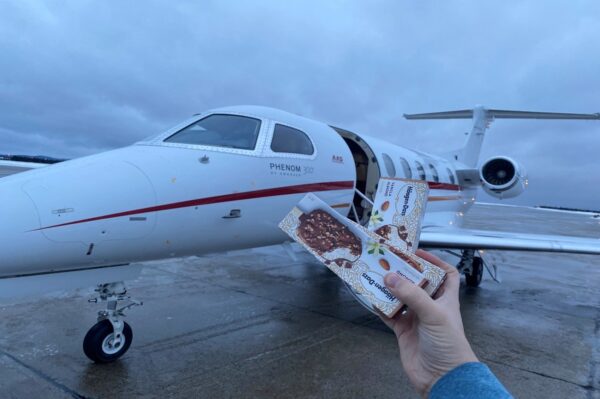
From Canada, we flew out to Bangor Maine to spend the night, clear customs, and get ready to head to Indianapolis to deliver the Jet to its eagerly waiting new owner. This leg of the trip was the first time flying the Phenom 300 at night and it performed very well. Making it into Bangor around 9:00 pm EST or so only the lights of the city and airport were visible. Customs and ramp agents met us at the parking area and escorted us to the FBO. After getting a nice meal at the hotel restaurant and a good night’s rest, we were just glad to be back in the States and on our way to the final leg of the trip.
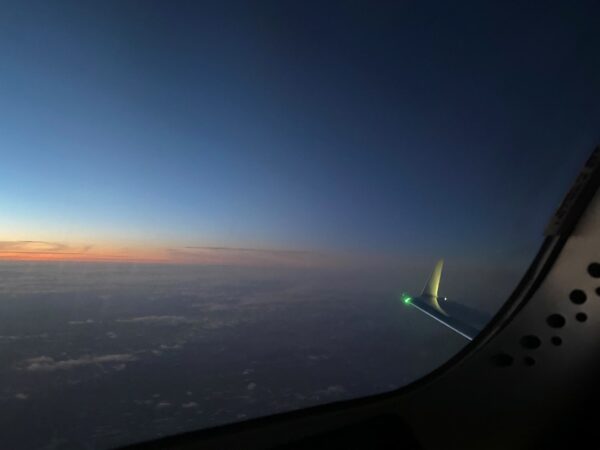
The next morning was clear and cold, with no icing conditions and unlimited visibility the captain allowed me to taxi the aircraft to the runway and perform the take-off. It was incredible; the Phenom 300 is certainly a handful although with the equipment and avionics onboard it’s very manageable and a true pleasure to fly. We made it to Indianapolis in a respectable amount of time despite getting routed by ATC and performing a visual approach into the destination airport. The Garmin G1000 avionics package made it very easy to load a three-degree visual approach into the destination airport as the favorable runway did not have a published approach. This kept us clear of terrain and obstacles, the landings are quite smooth thanks to the trailing link landing gear and carbon multi-rotor disc brakes.
After talking to the buyer and taking a tour of the facility it was time to ride to the airport terminal. Then say our goodbyes and head home on an airline flight from the long adventure that was my first exposure to a Phenom 300 from a crew member’s perspective and not just as a technician. What I can take away from this incredible experience is a newfound respect for anyone who flies one of these amazing machines single pilot as it’s certainly a handful at times especially in busy airspace and on departure and approach. What I can say is that anyone in the market for a midsize single pilot jet that has excellent performance, modern avionics, and a comfortable cabin should absolutely consider the Phenom 300 as a top three contender on their list of aircraft to purchase along with the Citation CJ-4 and Pilatus PC-24.
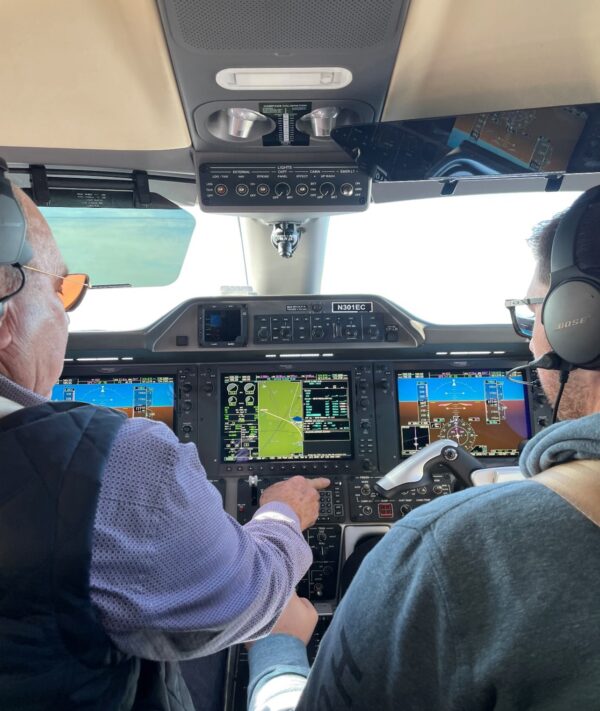
Would you like more information?
Send us a message below.

